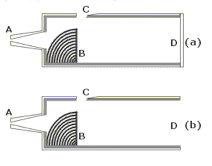- Basic
- Standard Compliant Channels
- $50
- Completely synergize resource taxing relationships via premier market
- 1 GB of space
- Support at $25/hour
- Sign Up
- Premium
- Standard Compliant Channels
- $100
- Completely synergize resource taxing relationships via premier market
- 10 GB of space
- Support at $15/hour
- Sign Up
- Platinum
- Standard Compliant Channels
- $250
- Completely synergize resource taxing relationships via premier market
- 30 GB of space
- Support at $5/hour
- Sign Up

An organ pipe is the simplest form of a wind instrument. Figure (a) shows the longitudinal section of an organ pipe whose one end is closed and figure (b) shows an organ pipe, both ends of which are open. It consists of a hollow tube BD in which air can be blown through a pipe A (also called the mouthpiece).
The air moves through a narrow slit B and strikes against the sharp edge C, called the lip. This lip vibrates and sets up vibration in the air column enclosed in the pipe. These vibrations travel to the other end of the pipe and get reflected. Due to superposition of the incident wave and the reflected wave, longitudinal stationary waves are formed. The frequency of the note produced, depends mainly on the length of the pipe and the type of the pipe, i.e., whether it is closed or open.
